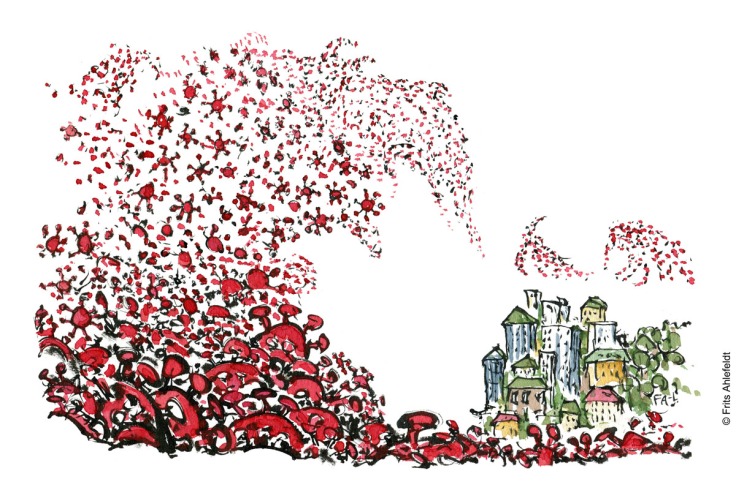Can we design and build our cities better to stop virus from spreading
Can we create “antivirus” enabled cities to help protect us from pandemics?
Text and drawing by Frits Ahlefeldt
In the field of technology it is common practice to design and incorporate solutions with both hardware and software parts to protect computer systems and networks from virus attacks. Could urban design and architecture be inspired by this and also from farming to help make us and our build environment more resistant to virus?
Antivirus city planning inspired by technology
Technology and the whole internet has been built in ways that can help it overcome virus-attacks, and for every new generation new security layers and systems are added to keep the ever mutating and changing computer-viruses from harming the digital structures.
Our cities are not designed or build in ways that effectively helps limit the effects of pandemics – as is very visible here under the COVID-19 Pandemic – But we are learning fast, and there are already a number of ways city planning can be inspired by technology:
Design cities in ways to better handle epidemics
Stress factors like pandemics can be better countered by designing both “hardware” (Build structures) and “software” ( Citizen cultures communication, know-how and understanding ) designs that take epidemics more into account as a design factor
Use technology to secure the health of the urban environment
Make architecture that helps make communication in social structures and networks stronger and able to run in several alternative ways, inspired by, and with use of technology
Antivirus architecture inspired by farming
Many methods and knowledge in traditional and modern farming are build upon and designed to help agriculture face all kinds of invasive species, pests and also resource and environment challenges.
Around 5-10.000 years of farming innovation has learned us a lot of different strategies to create systems that are resilient and flexible to thrive under both pests and lack of resources. Could we use some of these understandings to build better cities?
Modern trends: urban farming and local eating
Urban farming and local eating are just two of the ways and trends that have been growing in recent years. They are both about strengthening local hubs of self-sustaining communities. And both might also help to make us more resilient to epidemics.
Research into how nature and technology defend itself against viruses
Existing trends can already inspire city-planning, but we need to adjust these trends to the new pandemic challenge too.
Learning to build and safeguard cities against epidemics
The COVID-19 pandemic has shown that modern cities face a new generation of threats from viruses, that we are not yet ready to meet. But we also have new global understandings and new digital networks of immense power to our disposal, to build such an understanding faster than ever before in human history.
Overcoming the challenges
The challenge is to overcome limiting interests, habits and complicated building regulations, to make the changes needed and find new ways to do all this fast enough.
To accomplish this it can be a huge help to see how other systems, like the technological, digital systems and the agricultural systems have developed designs and ways to face virus and build strong pro-active antivirus strategies…
I’m sure we can learn a lot from study strategies in other fields, and maybe adapt ways that will work better in a new generation of city planning, better than if just using know-how from within the traditions of architecture or city planning itself

Keywords: Covid-19 coronavirus, virus, architecture, urban planning, design, landscape, urbanity, walkable cities, green eco design
Research links Citylab.com: How the Corona virus could change city planning
Story by Frits Ahlefeldt. FritsAhlefeldt.com
